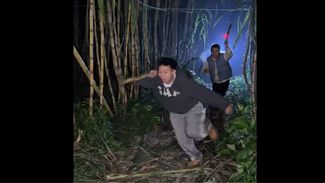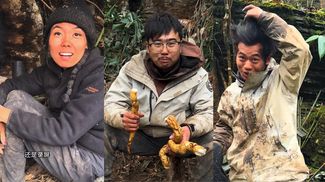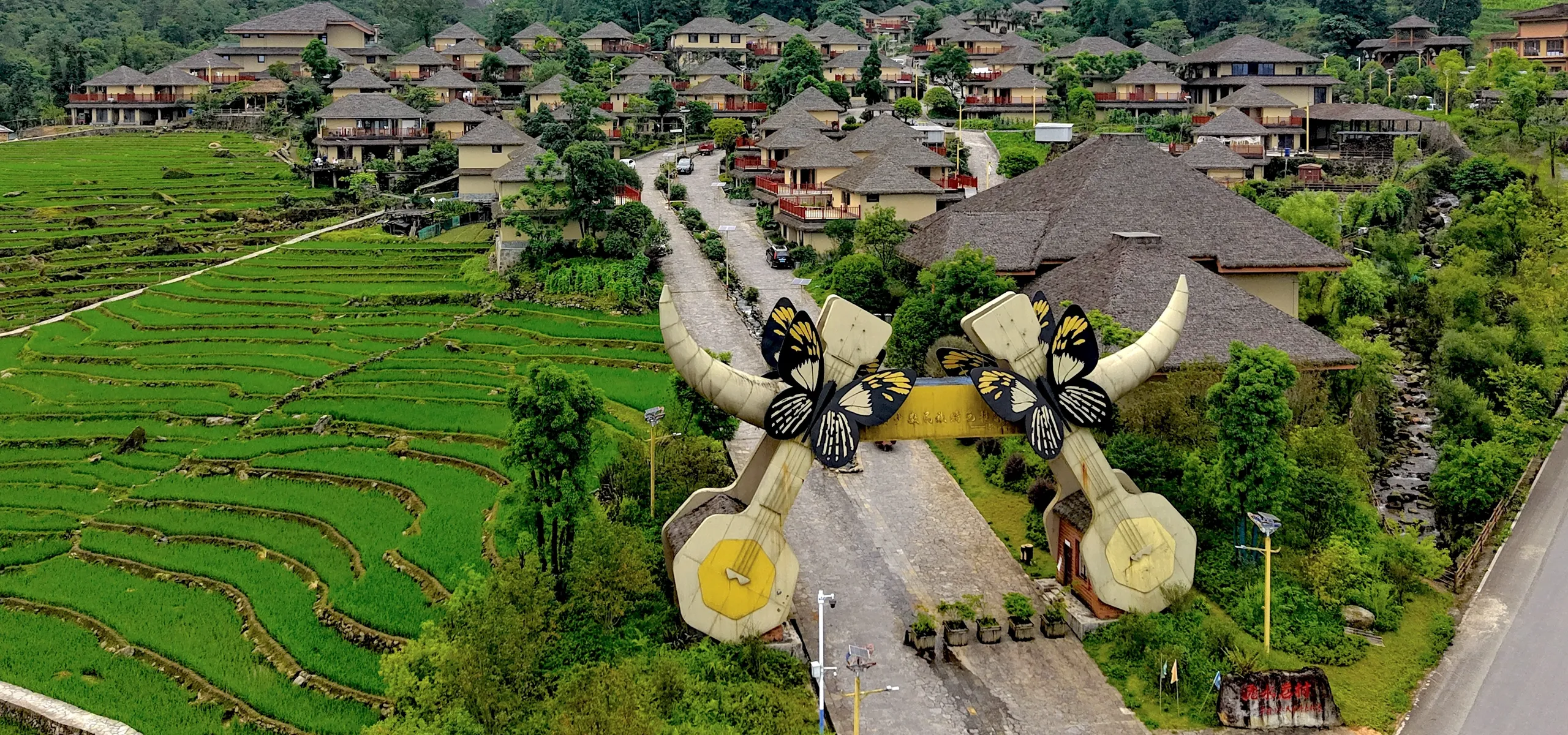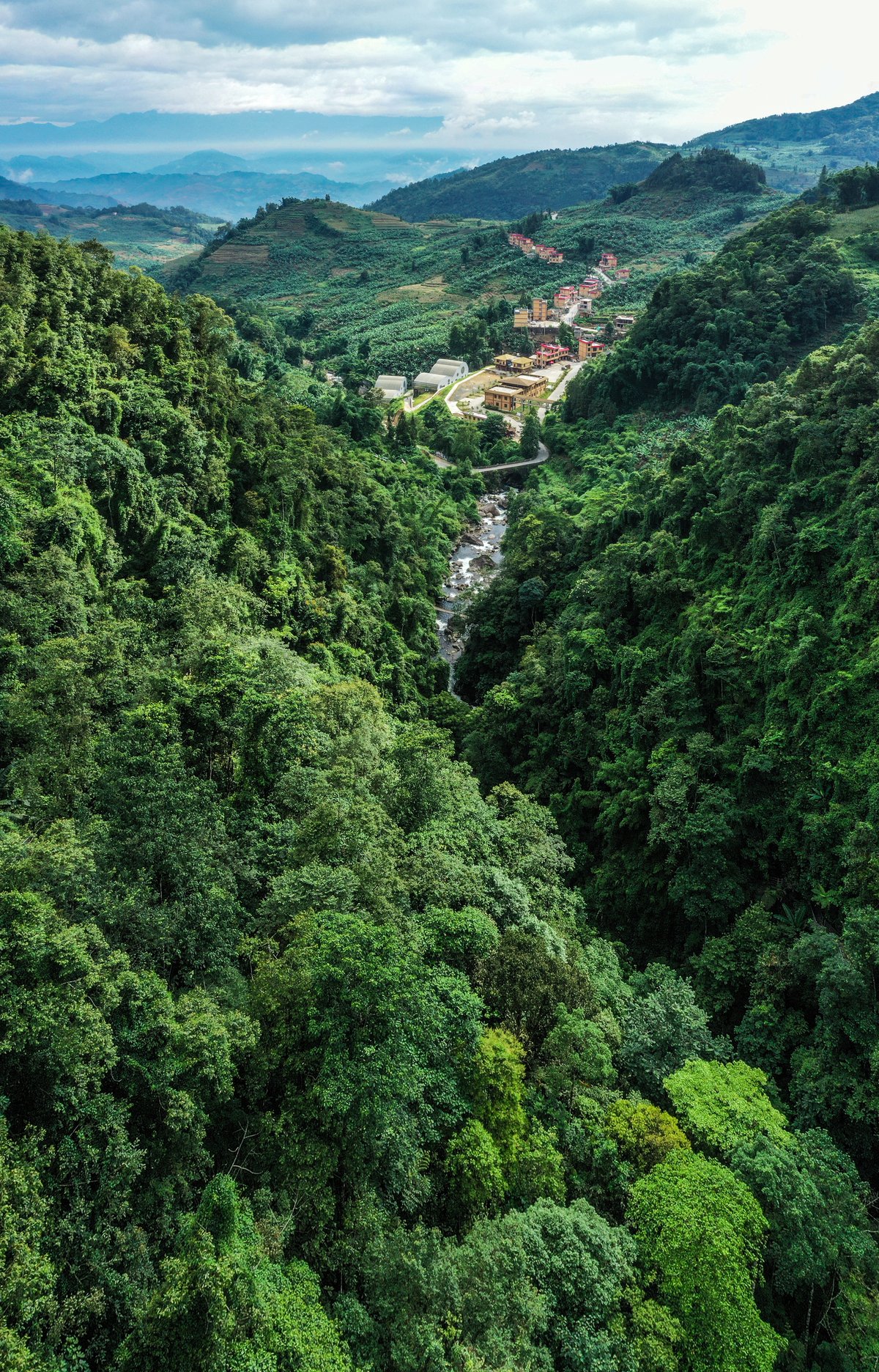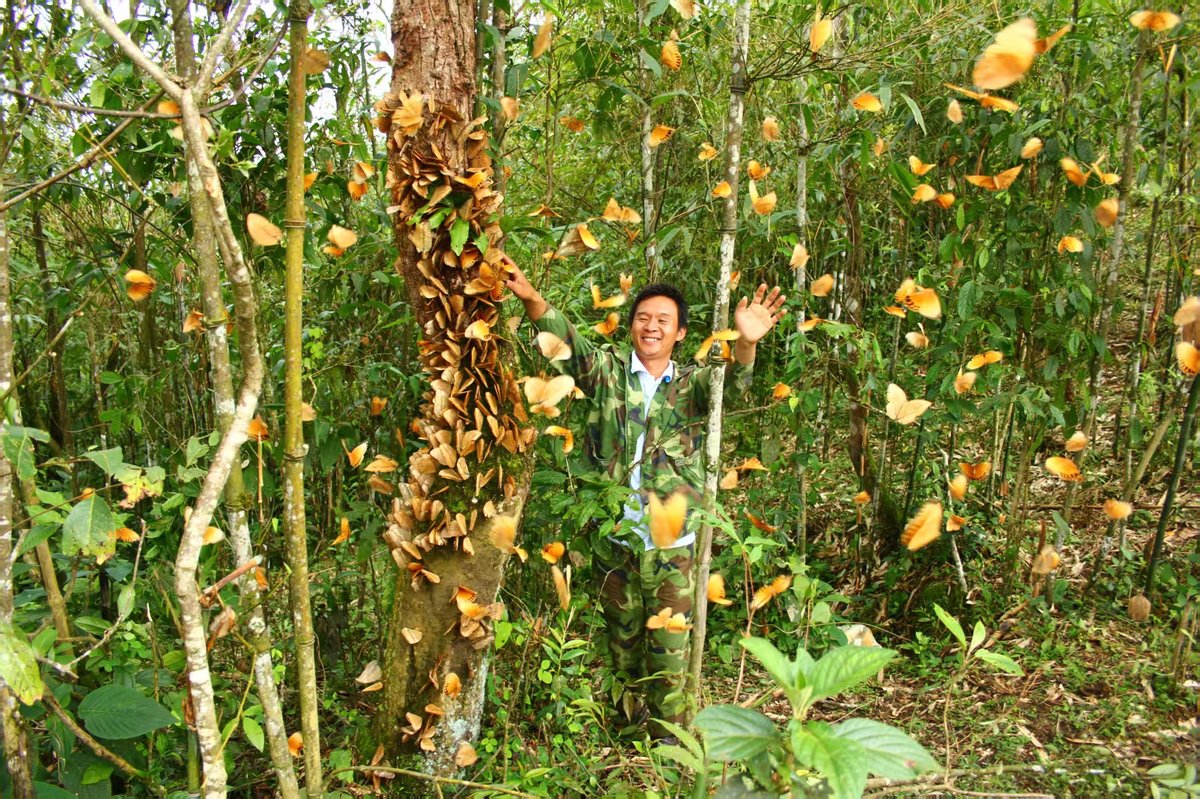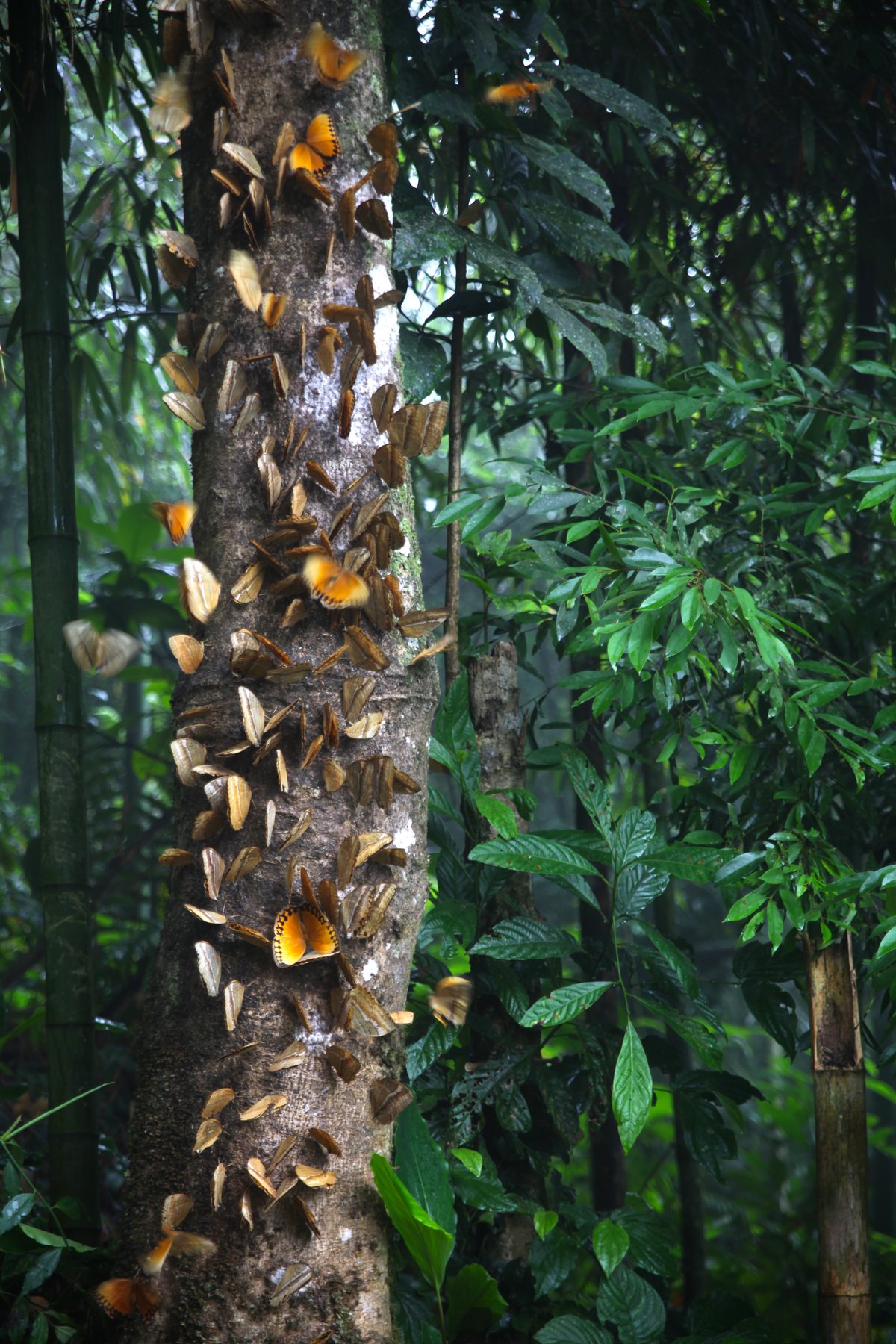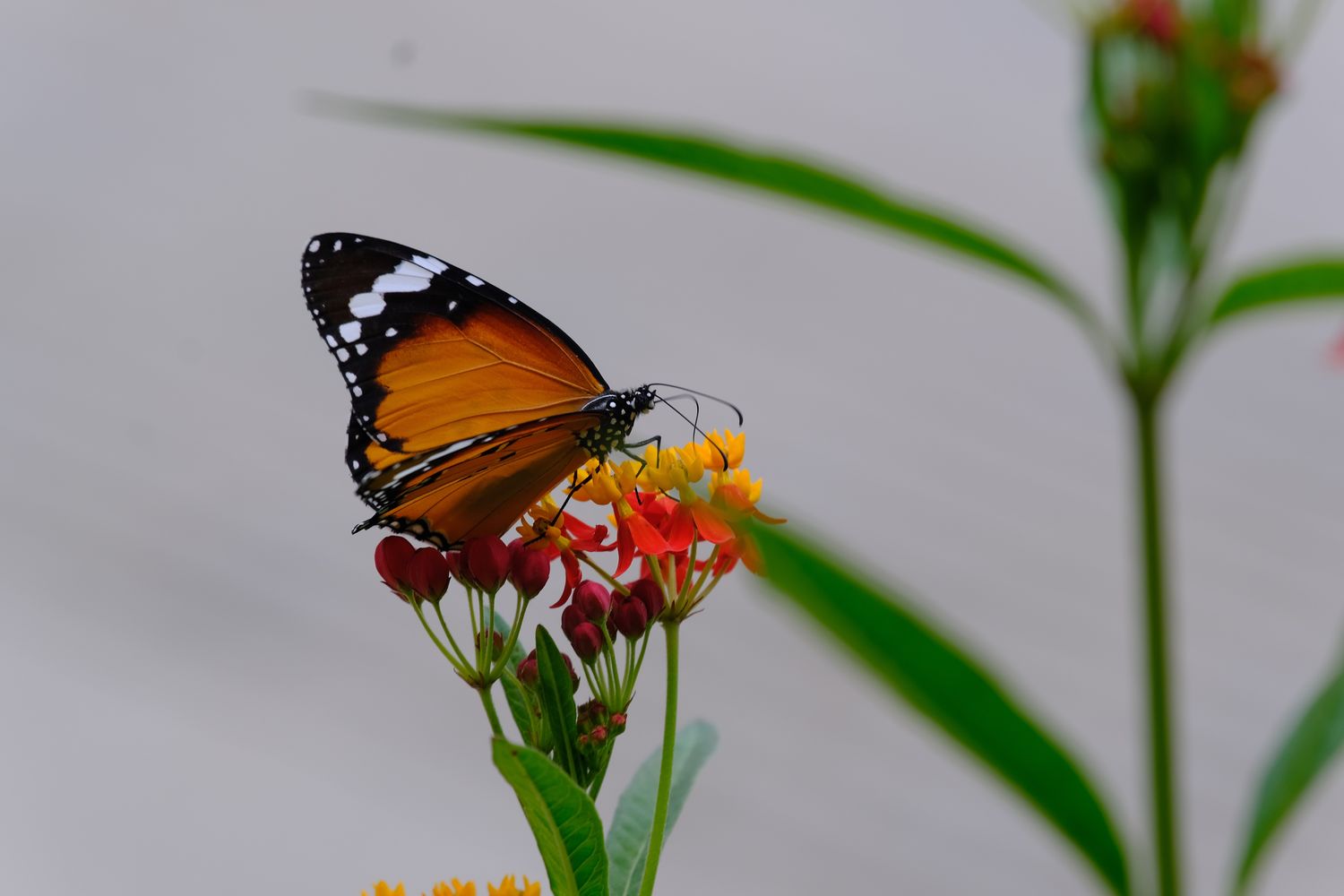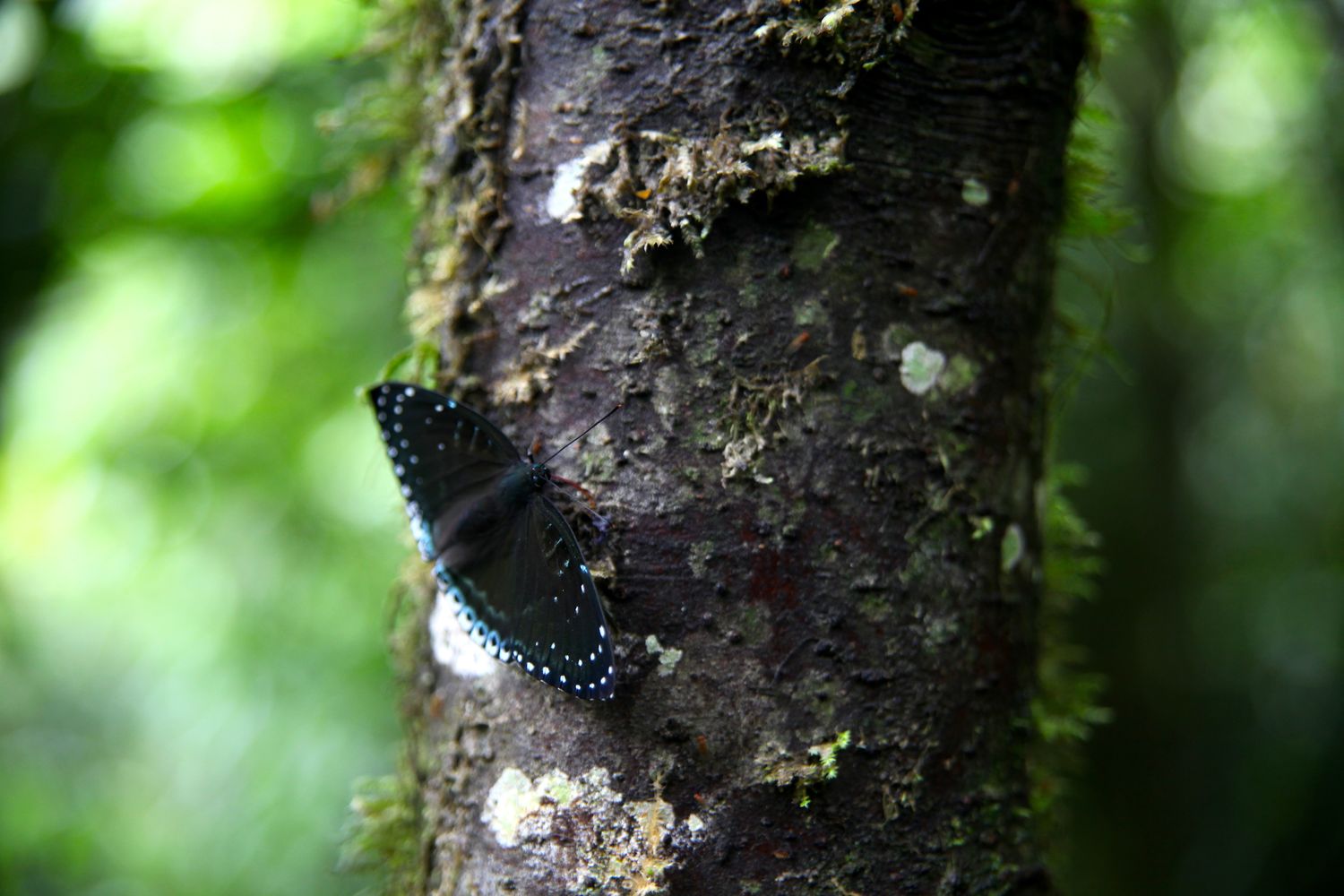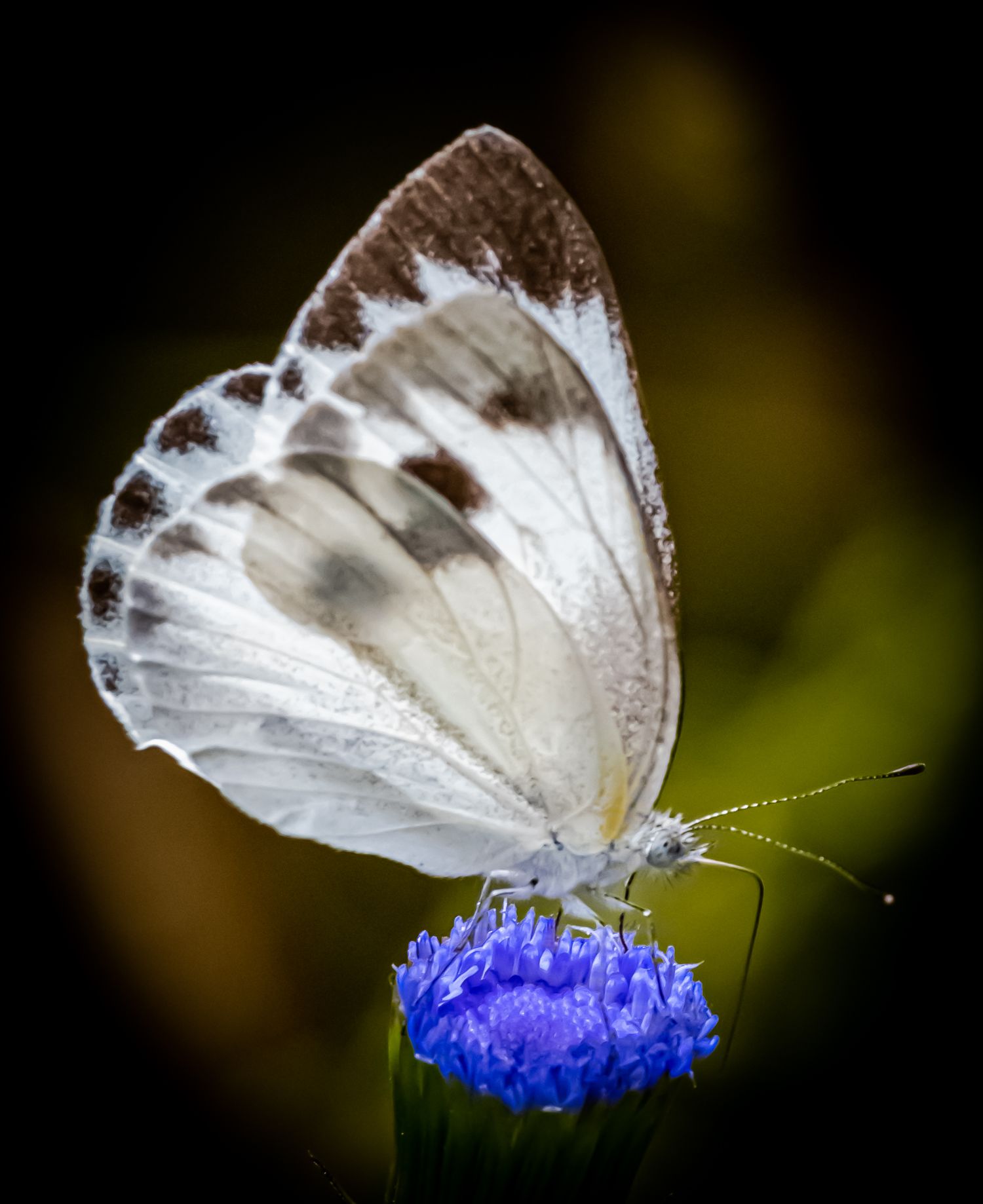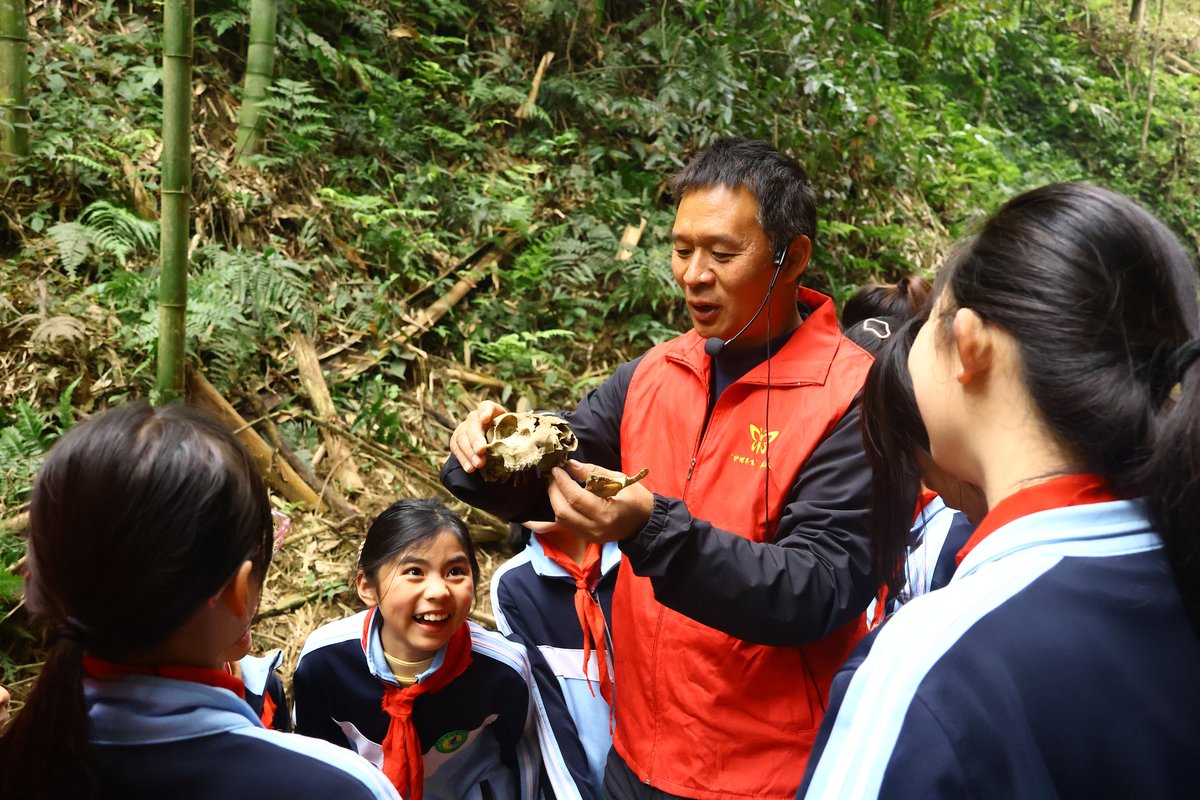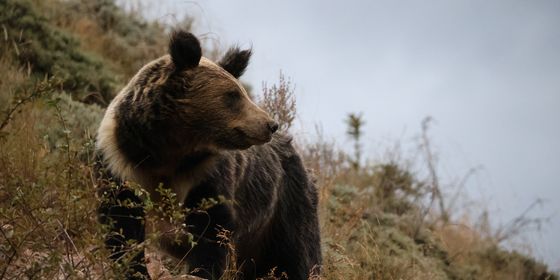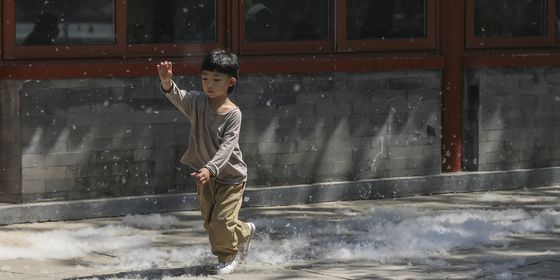Cradled in the borderlands between Yunnan and Vietnam, the town of Ma’andi bursts to life each year as millions of butterflies hatch in unison—a fleeting marvel now shadowed by the pressures of over-tourism and the urgent need for preservation
A security guard is standing by a long bamboo pole, decorated with colorful triangular flags, that serves as a boom barrier as I approach the border of the Jinping Miao, Yao, and Dai Autonomous County in Yunnan. “Can I check your ID, please?” he asks.
Sharing a 156-kilometer border with Vietnam, Jinping is often referred to as the land of longevity, with a pristine environment that encompasses some of southeastern Yunnan’s most stunning natural landscapes. Yet what truly sets it apart is a natural phenomenon that occurs once a year, between May and June: more than 100 million butterflies emerge, hatching from their chrysalis, creating a “butterfly explosion” that has garnered international fame.
Scribbling down the necessary information, the guard raises the barrier and waves us through. Driving along the cliffside road, we see vast rolling green hills speckled with banana trees and cornstalks around every bend. Small waterfalls sometimes fall directly over the pitted dirt road littered with potholes, boggy patches, and remnants of mudslides—a result of Typhoon Yagi sweeping through the region last year. Driving along the cratered paths into Jinping’s heralded Butterfly Valley, I begin to rethink my idea of exploring one of China’s most mysterious and breathtaking border regions.
A call comes in from the leader of Biaoshuiyan, a small village close to my destination. “Where are you guys?” he asks.
“We’ve just passed Longbohe Bridge,” I reply.
He hangs up. I glance at the GPS, indicating there’s another 40 kilometers of this uphill climb.
Read more about traveling in Yunnan
- Azheke’s Shared Prosperity: From Remote Hamlet to Global Spotlight
- China’s Tin City: How the Metal Made Gejiu
- On the Trail of Yunnan’s Forgotten Horse Gangs
The life of a butterfly
Often referred to as the “butterfly homeland” of China, the Ma’andi township (马鞍底乡) in Jinping is home to one of only two “butterfly explosions” in the world, alongside the Monarch Butterfly Biosphere Reserve in central Mexico. Of China’s 12 recognized butterfly groups, 11 can be found fluttering in the subtropical region’s misty, dense forests. The golden Kaiser-i-Hind—China’s national butterfly and one of its rarest—can be spotted here. Since the discovery of the butterfly explosion in 1998, this ecological wonderland has slowly gained a reputation for its rich and thriving assortment of plants, insects, and exotic animals.
Ma’andi is a tropical climate, with an altitude ranging from 130 to 3,012 meters. It gets heavy rainfall, with 70 percent of the region covered in forest, making it a prime breeding ground for butterflies. The region’s abundant bamboo also plays a key role, as butterflies lay eggs inside.
One of the best places to hit on the way to the Butterfly Valley is the Biaoshuiyan village, a small village surrounded by vivid green rice fields within Ma’andi. Home to just over 70 households—mostly of Hani ethnic minority—the village greets visitors with an arch adorned with wooden carvings of two large butterflies, a pair of ox horns, and four string instruments. Nearby, mist drifts over the 262-meter-long Biaoshuiyan Waterfall, one of hundreds scattered across Ma’andi.
“Over 340 butterfly species can be found here,” says the leader of Biaoshuiyan village as he points to the various butterflies, as well as sparrows, that have wandered into his home. A lanky Hani man in his 50s, he takes a puff from the bamboo water bong he’s smoking before continuing, “But the butterfly explosion mainly centers on one group, the jungle queen butterfly. They gather during this brief window, and soon they’ll start laying eggs in the bamboo. That’s the first stage of the cycle.”
Within a month, the insect hatches from an egg to begin its larval stage as a caterpillar. The larva then forms a hard shell and becomes a pupa, at which time it initiates a breathtaking metamorphosis that culminates in its emergence as an adult butterfly. The most prominent species here, the jungle queen butterflies, live only about 15 to 30 days. Unfortunately, we missed the peak of the explosion by about two weeks.
“This year’s butterfly explosion happened a little later, around May 20, with most of the butterflies being visible between June 5 and 9,” the village leader tells us.
Biting into some beef jerky that his wife prepared, the village leader points at a picture on the wall of him, his wife, and another woman. “Even Yang Liping (a nationally acclaimed Yunnan dancer) has come to visit the Butterfly Valley.”
But the spotlight of tourism hasn’t been all good news for the area and its delicate ecosystem. “There’s less and less [bamboo]. Some have been cut down to build walkways nearby or have been shipped out to other places,” says the village leader. “Management isn’t meeting expectations. People come to wash clothes and bring food, which also attracts the butterflies. They’re drawn to things like sweet baijiu, but while it doesn’t affect us, it can harm their fragile bodies. The larvae consume it too, and because they have such low resistance, it can seriously impact their development, affecting future generations as well.”
Butterfly Valley
The next morning, I set out for Ganbaxiang village, the place where most of the remaining butterflies can be found. Driving through a drizzle, I eventually encounter a ranger in a camo outfit sitting alongside a stone staircase collecting the 10 yuan entrance fee into Butterfly Valley.
Butterflies flutter left and right on the hike up, huddling together on tree trunks and feeding from the juice of different fruits. Tourists are busy snapping photos and walking up the stone steps to venture deeper into the valley. The trickling sound of the valley’s fresh mountain water mixes in with a chorus of bugs and other forest creatures. I can only imagine what it looked like at the height of the butterfly explosion, when an estimated 150 million butterflies hatched, according to China National Radio.
An older Chinese woman asks a ranger to take a photo of her with a peaceful cluster of jungle queen butterflies resting on a tree trunk. To create a better backdrop, she picks up a tree branch to swat at the butterflies, startling them. Shocked at the inconsiderate behavior, I ask her, “How would you like to be swatted by a branch?” Startled, but acknowledging her mistake, she embarrassedly walks down the stairs and leaves.
“Does this happen often? How do you guys manage these types of tourists?” I ask the ranger, who seems to be unmoved by the act. He says he’s seen worse, such as tourists pulling apart the butterflies’ wings. He suggests that I visit Yang Zhenwen, a renowned butterfly expert in Ma’andi to learn more about the valley.
I linger another hour, watching the dazzling butterflies flutter and dance.
Protectors of the valley
Yang Zhenwen runs Dieyuan Shanzhuang (“Butterfly Garden Lodge”), a small mountain retreat not far from Ganbaxiang village. “Most people think Butterfly Valley is just a valley. But here in Ma’andi, it actually covers 273 square kilometers,” he says while pouring tea. “Apart from the protected area, there are over 80 villages, but they’re all part of the Butterfly Valley.”
According to Yang, the number of butterflies is declining. In 2010, there were over 400 million butterflies. Today, it’s around 100 million. Global warming, habitat destruction, and pesticides from farming are all major factors. The total coverage area of the butterfly explosion has also decreased by 20 percent since 2010, from 56,000 mu to 46,000 mu. “But the high forest coverage and villages being built at lower altitudes have helped preserve the core butterfly regions, which are around 1,300 meters above sea level. The coverage area has also stayed steady in the past five years,” says Yang.
An active participant in butterfly conservation, Yang hopes the Butterfly Valley can become a harmonious environment where locals and butterflies coexist. He says the local government is doing its part to increase awareness and boost the overall protection of the butterfly ecosystem, while promoting tourism to help bolster the local economy.
“In 2010, the local government enacted the Butterfly Valley Management Regulations, local laws aimed at protecting butterflies,” he says. “These regulations were the first in the world dedicated to protecting butterfly biodiversity. Now, there is also a Butterfly Valley Management Bureau, which is aimed at protecting Butterfly Valley.” However, more funding and support are still needed from the central government, especially now with the roads in need of repair.
Yang has been raising five types of butterflies on a small enclosed section on his manor: the Swordtail, Phoenix, Kretu, Blue-striped, and Dead Leaf butterflies. While I take a glance at his small butterfly preservation center, tourists continue to stroll in to interact with the delicate creatures.
“If there weren’t people protecting pandas in their natural habitat, they would’ve become extinct early on. Humans are a part of the world,” he reassures me. “ We need to develop, protect, and utilize this world. Conservation is the combination of protection and utilization.”
The rain begins to pour down again. “I hope for two things to happen: One, to protect the natural resources and ecology. Wherever restoration is needed, we should help restore it. Let the butterflies, along with the people, live here peacefully and happily.” Yang says. “Two, let the butterflies take off. They’re beautiful creatures with beautiful wings that can soar. They can lead the villagers and the local economy.”
Taking a final sip of tea, I tell Yang that I have to go. On the way out, an orange and black butterfly flutters by, landing on the flowerpots right in front of us. “This is a Leopard Lacewing,” he says excitedly, reaching for his phone to capture the moment.
Ma’andi: The Mysterious Land of Butterflies is a story from our issue, “Urban Renewal.” To read the entire issue, become a subscriber and receive the full magazine.

